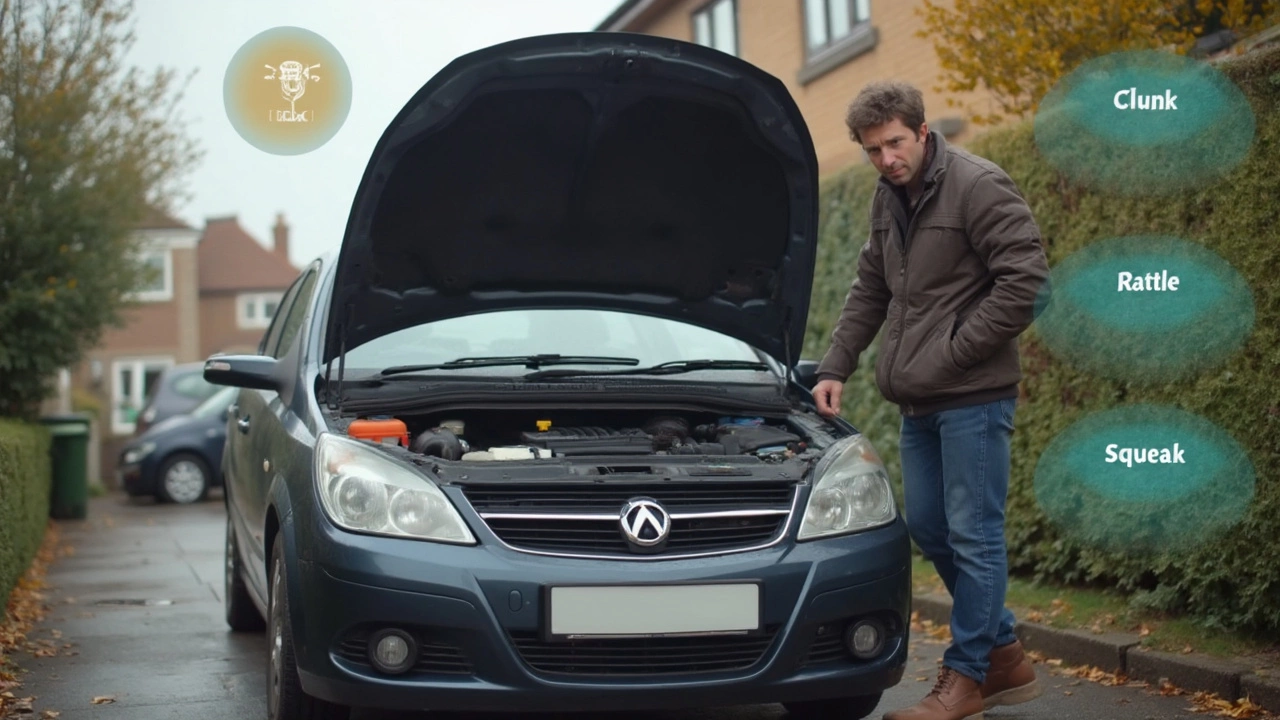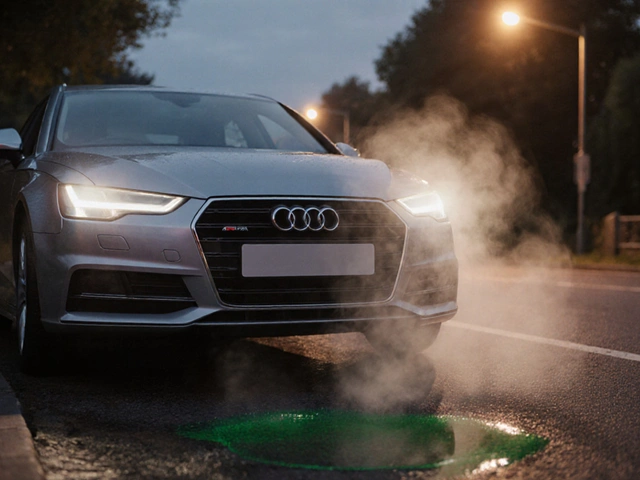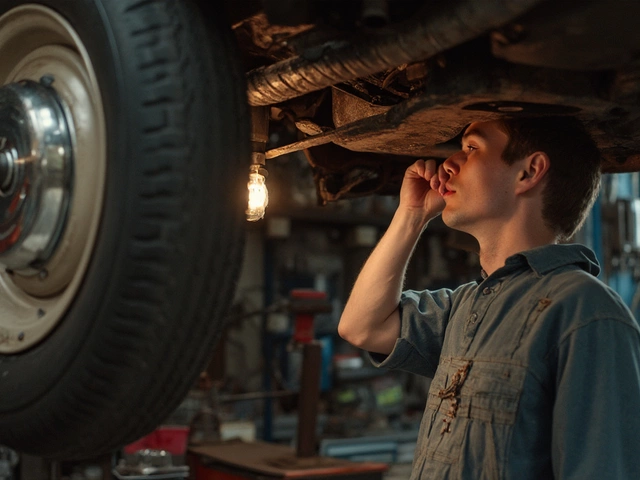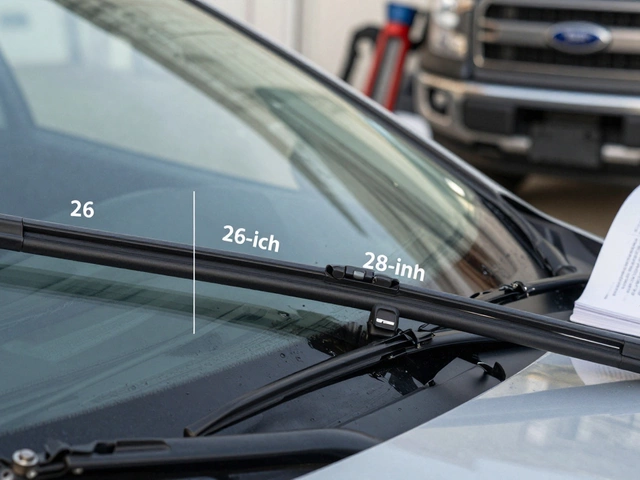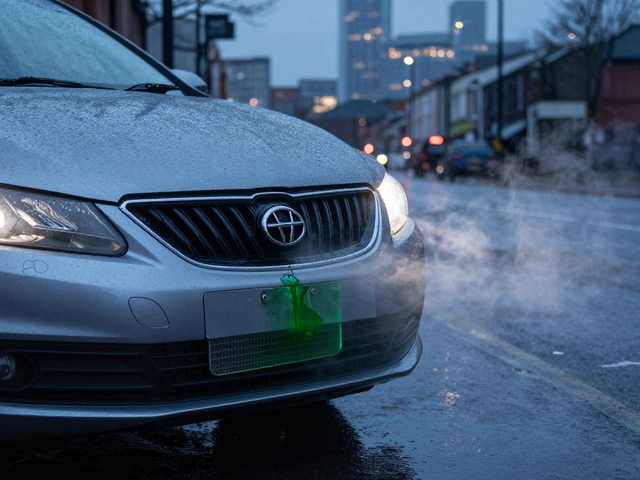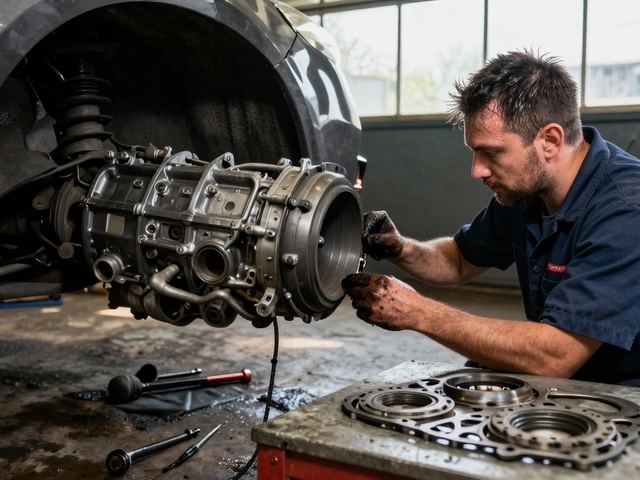You hear a new noise when driving over bumps—a thud, a squeak, or maybe a rattle that wasn’t there last month. Don’t shrug it off. Strange noises can be one of the first signs that your car’s suspension system is struggling. And trust me, ignoring these sounds can lead to more expensive repairs down the road.
Most suspension problems don’t start big. Maybe you hear a creak every time you back out of the driveway or a noticeable clunk when you hit a pothole. These sounds aren’t just annoying—each one is a clue. For example, a metallic knocking might point to a worn ball joint, while a squeaking noise could mean your bushings are dried out or cracked.
I’ve been down this road before—literally and figuratively. The first time my car made a sharp clunk after hitting a speed bump, I didn’t think much of it. Fast forward three weeks and I had to replace the control arm because I waited too long. Breaking down what you’re hearing (and when) saves money and hassle. Listen closely; your car is trying to tell you something.
- Common Noises of a Bad Suspension System
- What Each Sound Means
- Underneath Your Car: Where Noises Happen
- Real-World Examples and Experiences
- Quick DIY Checks Before You Panic
- When to Call a Mechanic: Knowing the Red Flags
Common Noises of a Bad Suspension System
When your suspension parts start going bad, your ears are usually the first to know. You don’t have to be a car expert to pick up on the giveaway noises—just roll down a window, kill the music, and listen closely next time you drive over a bump or make a sharp turn.
Here’s what to watch (or rather, listen) for:
- Clunking – Often caused by worn-out ball joints, strut mounts, or control arms. This is usually a heavier, metal-on-metal sound, especially when going over speed bumps or rough roads.
- Squeaking or Creaking – Bushings or control arm bushings drying out or cracking can lead to these noises. Sometimes these go away after a rain (water acts as a lube), but then they come back with a vengeance.
- Rattling – Loose sway bar links or end links can make your suspension sound like a toolbox bouncing around under your car. Rattling is especially noticeable at slower speeds over small bumps.
- Knocking – Bad shocks or struts cause this, especially when they're worn through or leaking fluid. You’ll hear this sound on rough roads and the ride will feel less stable.
- Grinding – If you ever hear a grinding sound, that’s bad news. Sometimes it’s a broken spring or two metal surfaces rubbing together, which means immediate attention is needed.
If you’re wondering how often people actually experience these problems, check out this mini data table from a popular vehicle repair survey:
| Noise Type | Percentage of Reported Suspension Issues |
|---|---|
| Clunking | 38% |
| Squeaking | 27% |
| Rattling | 19% |
| Knocking | 11% |
| Grinding | 5% |
So the next time you detect a noise, don’t just crank up the radio. Those odd sounds are your car’s way of flagging a bad suspension system before things get worse—and more expensive.
What Each Sound Means
A bad suspension system can make your car sound like it’s falling apart, but those noises are actually trying to help you out. Each sound gives you a clue about what’s worn out or broken. Here’s how to break it down:
- Clunking: Usually happens over bumps. This sound often means a loose or busted ball joint, control arm, or tie rod. It can also be from worn-out shock absorbers or struts.
- Squeaking or creaking: This is pretty common when bushings have gotten dry or cracked. It might also come from sway bar links, especially if you only hear it at low speeds or when turning.
- Rattling: A rattling noise means something is loose. Most of the time, it’s a stabilizer bar link or loose bolts around the suspension parts.
- Knocking: Knocking can point to worn-out shocks or struts. If the oil inside them leaks out, all that’s left is metal hitting metal with every pothole.
- Groaning or moaning: Less common, but if you hear this when turning, it could be the suspension bushings or even steering linkage showing their age.
It helps to check when you hear the noise: only when driving over bumps, all the time, or just while turning? For example, if your car bad suspension sounds mainly act up when you hit a pothole, look at shock absorbers first.
| Noise | Likely Cause | Where You'll Hear It |
|---|---|---|
| Clunking | Ball joints, control arms, tie rods | Over bumps |
| Squeaking/Creaking | Bushings, sway bar links | Low speeds or turns |
| Rattling | Loose bolts, stabilizer bar links | Anytime, especially bumpy roads |
| Knocking | Worn shock absorbers or struts | After every bump or pothole |
| Groaning/Moaning | Suspension bushings, steering linkage | While turning |
If your car makes one of these noises, don't ignore it. Each one points right at a specific part that needs looking at before things get worse—or pricier.
Underneath Your Car: Where Noises Happen
If you stuck your head under the car (not saying you should without proper safety, by the way), you’d find out fast that a lot is going on with your suspension. All those clunks, squeaks, and rattles usually come from a few specific spots under there. Knowing exactly where these noises are born can help you figure out the real problem before your wallet takes the hit.
The biggest troublemakers are usually:
- Ball joints: These connect the control arms to the steering knuckles and let your wheels move up and down. When they wear out, you’ll hear a metallic clunk, especially on bumps.
- Bushings: These little rubber cushions stop metal-on-metal contact in spots like control arms and sway bars. When they dry out or crack, you’ll start hearing annoying squeaks or groans.
- Shocks and struts: They keep your car riding smooth. If they leak or fail, you often get a dull thud or knocking sound.
- Control arms: These connect the wheel hub to the frame. A loose or bent control arm makes a knocking or banging noise on rough roads.
- Sway bar links: If these fail, you’ll hear rattling and clattering—especially on uneven roads.
It’s not just about the noise itself, but where in the car it’s coming from: front, rear, left, or right. For instance, rattling near the passenger front tire after hitting a pothole usually signals issues with the ball joint or tie rod in that corner. If you hear a banging from the back end, especially after loading the trunk, it’s probably the rear shocks.
Check out this quick overview of which noises typically tie to which suspension parts:
| Suspension Part | Common Noise | Where Heard Most |
|---|---|---|
| Ball Joint | Clunk/Knock | Front, when turning or over bumps |
| Bushing | Squeak/Groan | Anywhere, especially during slow speed bumps |
| Shocks/Struts | Thud/Bounce | Front or rear, after bumps |
| Control Arm | Knock/Bang | Front or rear, uneven pavement |
| Sway Bar Link | Rattle/Clatter | Front or rear, especially when turning |
If you’re hearing weird noises, pay close attention to when and where they happen. That’s half the battle. When you’ve pinpointed a spot—even if you don’t fix it yourself—you can tell your mechanic exactly where to look, which saves time and avoids those classic, “Couldn’t replicate the problem” calls.

Real-World Examples and Experiences
Let’s get real—almost everyone who drives has had a surprise noise come from underneath at some point. One of my coworkers hit a pothole during a road trip, and after that, every bump made her minivan sound like a shopping cart rolling over loose pavement. Turned out, her sway bar link was completely shot. She kept driving on it for weeks until the noise got so loud that she couldn’t ignore it. In the end, the repair cost doubled because the bad link damaged some other parts.
I’ve been there myself. My own sedan started making a deep clunk every time I steered hard left. At first, I thought maybe something was wrong with the steering. Turns out, the control arm bushings were so worn that the arm would shift under pressure. Once replaced, the clunk was gone and the car steered better than it had in years.
Here’s a quick look at what people usually notice, what part’s involved, and what the fix looks like:
| Suspension Noise | Likely Cause | Average Repair Cost (USD) |
|---|---|---|
| Loud clunk when hitting bumps | Worn ball joints | $200 - $400 |
| Persistent creaking at low speeds | Dry/failed bushings | $100 - $300 |
| Rattle over rough roads | Loose sway bar links | $75 - $175 |
| Knocking while turning | Failing tie rod ends | $150 - $350 |
| Metallic banging from rear | Broken shock mounts | $150 - $250 |
One real pro tip? Don’t ignore a bad suspension sounds. In a 2023 AAA report, they found that over 30% of roadside breakdowns involved vehicles that had obvious noises or vibrations weeks before something failed.
If the thuds and rattles get louder or show up with steering problems, don’t gamble—get it checked. My friend once delayed fixing a persistent rattle. The next thing you know, he was stranded, waiting on a tow truck in the pouring rain. Lesson learned: those noises really are the first warning you get.
Quick DIY Checks Before You Panic
Before opening your wallet or heading to a mechanic, you can spot a lot about your suspension issues right in your driveway. Don’t worry, you don’t need a fancy toolbox or advanced skills—just a careful ear and a little patience.
First, pay attention to exactly bad suspension sounds coming from your car. If you hear knocking, squeaking, or groaning, jot down when and where it happens: over bumps, while turning, or maybe even when you get in and out of the car.
- Bounce Test: Park your car on a flat surface. Press down hard on one corner and let go. If your car keeps bouncing more than twice, your shocks and struts might be worn out.
- Visual Check: Get down and peek under your car at the suspension parts. Look for leaks around shocks or struts, cracked bushings, or anything dangling or obviously out of place.
- Tire Inspection: Uneven tire wear can be a dead giveaway. If you notice abnormal wear—especially cupping or bald spots—it often points to suspension issues.
- Listen in Motion: Take a short drive around the block, windows down and radio off. Pay attention to noises over bumps or rough roads. Note if the car feels floaty or pulls to one side.
If you spot any red flags, make note of what you see and hear. This info is top-notch for explaining the problem to a mechanic later.
| DIY Check | What to Look (or Listen) For | Possible Problem |
|---|---|---|
| Bounce Test | More than 2 bounces | Worn shocks or struts |
| Visual Inspection | Leaking fluid, damaged bushings, loose parts | Leaky shocks, bad bushings, loose mounts |
| Tire Wear | Cupping, bald spots, uneven wear | Alignment problems, worn suspension |
| Test Drive | Clunks, squeaks, car pulls to one side | Ball joints, bushings, or spring issues |
Remember, these checks can help you spot issues early, but they won’t cover every problem. If something feels sketchy or you can't find the source, don’t push your luck. Some suspension failures can make driving risky. But catching these signs early saves money, time, and stress—trust me, I've learned that the hard way.
When to Call a Mechanic: Knowing the Red Flags
If your car’s weird noises just keep getting worse, it’s time to stop guessing and call in a pro. Some problems with your suspension system are just too risky—or too complex—to handle on your own. If you notice any of these clear warning signs, don’t put it off.
- You hear a consistent, loud bad suspension sounds like knocking, clunking, or grinding every time you hit a bump, even at low speeds.
- Your steering feels loose, slow to respond, or you need to constantly correct the wheel to keep the car straight.
- One side of your car sits lower than the other, or you spot uneven tire wear (flat spots, bald edges).
- There’s visible fluid leaking from your shocks or struts.
- You notice the car bounces more than usual after going over a speed bump or pothole (the classic "bounce test" fails—meaning it bounces more than twice).
- Any scraping, grinding, or metal-on-metal sounds, especially if you can’t see something obvious under the car.
If you’re wondering how common these troubles are, check out this quick comparison:
| Symptom | Chance it’s Suspension-Related (approx.) | Can You DIY? |
|---|---|---|
| Clunking/Knocking | 80% | Sometimes, if it’s a loose bolt. Usually needs a mechanic. |
| Poor Steering / Drifting | 70% | Rarely—needs a shop for safe alignment or part replacement. |
| Leaking Shocks | 95% | Most people prefer a mechanic. Shocks/struts can be tricky and dangerous to DIY. |
| Bounce Test Failure | 90% | You can test, but replacement is best left to professionals. |
| Uneven Tire Wear | 75% | Diagnosis at home; fixes need pro tools. |
If you recognize any of these red flags and you’re not a seasoned DIYer, protecting your car (and your wallet) usually means calling a good mechanic. Don’t wait for a full breakdown—safe suspension means safe driving.
